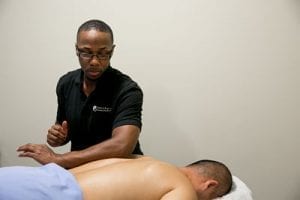Hyperglycemia is a condition where a person’s blood sugar level is higher than they should be. Fasting blood sugar levels for a normal person are between 70-100mg per deciliter. After eating a meal, they generally do not get higher than 150mg. Anything over 180mg is cause for concern. As opposed to that, hypoglycemia is where a person’s blood sugar level is 65mgs or lower. These days, people are learning how they can use massage for managing hyperglycemia & hypoglycemia.
Both of these conditions are detrimental to good health. A person with consistent high blood sugar may eventually develop diabetes and require medication to keep their blood sugar levels in check. Someone with low blood sugar levels will experience decreasing mental functions and adverse physical side effects up to and including seizures.
Both hyperglycemia and hypoglycemia are dietary problems in nature, which comes from eating too many foods that cause the blood sugar to rise or not getting enough food to supply the energy your cells need. There are several ways you can correct either condition. Your doctor will usually recommend that you first make changes to your diet and exercise regimen to help you maintain healthy sugar levels.
Another reason for abnormally high or low sugar levels in the blood is due to the action of insulin. Insulin helps cells absorb the sugar in your blood. If you produce too much of it or not enough, you will experience hypoglycemia or hyperglycemia respectively. Depending on the severity of your condition, you may be prescribed medication. But more people are asking how to use massage for managing hyperglycemia & hypoglycemia.

Role of Massage in Managing Blood Sugar Levels
One question that comes up frequently from suffers of either issue is whether or not massage is helpful for controlling blood sugar levels. Massage therapy is a manipulation of the body for health and wellness purposes. Practitioners utilize their hands to work the body using a variety of techniques including kneading the muscles and stroking the skin. It is known for improving circulation, reducing tension, and alleviating pain.
Diabetics have reported that massage helped reduce their blood sugar levels by as much as 100 points. Some have also reported they have been able to maintain healthy sugar levels when they get massages on a regular basis. This may be true for one important reason: massage helps reduce stress. When a person is under stress, a chemical is produced in the body called cortisol. It is secreted by the adrenal gland and one of its primary functions is to increase blood sugar in order to provide the body with the energy it needs to handle whatever crisis is happening. Unfortunately, people find themselves under constant stress which can lead to hyperglycemia because cortisol actually counteracts the effects of insulin. Getting a regular massage helps reduce stress levels and the resulting production of cortisol thereby lowering the amount of sugar in the blood and giving insulin a chance to so its work.
Are you interested in becoming a certified massage therapist?
Visit the links below to explore our massage therapy programs at a campus near you:
Research conducted by the Touch Research Institute at the University of Miami School of Medicine found that test subjects that underwent massage therapy experienced a 31% decrease in cortisol levels.
Massage is also good for improving circulation, which is important in people with high blood sugar levels. Too much sugar in the blood slows down the circulatory system which in turn causes problems such as diabetic neuropathy and atherosclerosis. These conditions can lead to loss of feeling in the extremities (hands and feet), blindness, and heart failure.
Maintaining good circulation is the key to preventing these side effects if you suffer from blood sugar problems. Getting a massage on a regular basis from a professional is an easy way to lower your stress levels and promote good circulation for optimum health and wellbeing.
Featured Posts:

